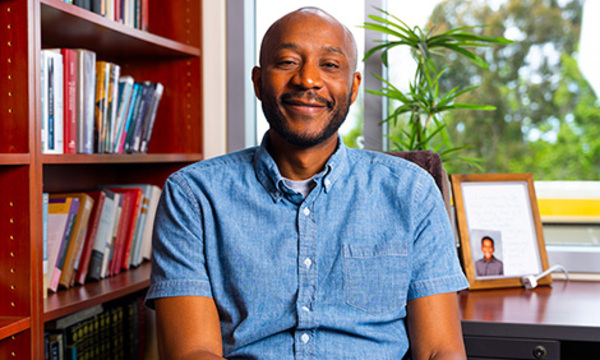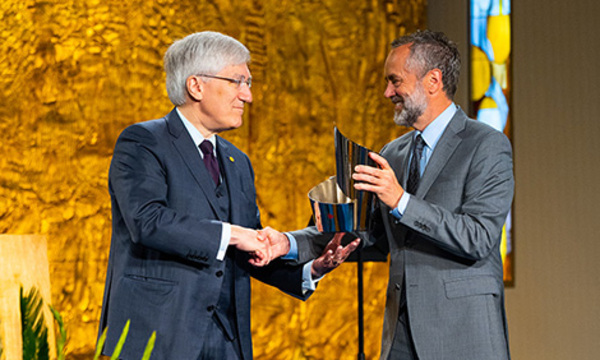Before there was Facebook, there was BUBBS.
It wasnât nearly as glamorous, and it certainly wonât inspire any award-winning movies any time soon. But for an entire generation of students and alumni, BUBBS (the folksy acronym for âșÚĘźÊÓÆ” Bulletin Board Systemâ) was a defining part of the Biola experience.
And now itâs gone â mostly, at least. In March, Biola will pull the final plug on the quirky e-mail/calendar/social networking systemâs life support, completing a yearlong transition to a new set of tools powered by Google â a move that feels bittersweet for many Biolans.

âLooking forward, BUBBS just wasnât sustainable,â said Steve Earle, director of technology services at Biola. âIt did a few things really well, but it did a lot of things really badly.â
When it was launched in 1992, BUBBS was an idea far ahead of its time, a foretaste of things to come when the internet would become The Internet.
It all worked simply enough: If you were a Biola student, professor or staff member, youâd just punch your user name and password into a login screen, and up popped a window where you could find your Biola e-mail inbox and calendar system. Some never used it for more than this. But for those who explored a bit further, double-clicking on the unassuming âConferencesâ icon, a wider world awaited â especially as the system evolved over the years.
There was the Virtual SUB, a chat room where bored or distracted students could go to talk with other bored and distracted students. There was the personal profile page, where students could share photos, quotes and all the other information they now post on Facebook. Then, of course, there were a series of folders â âMovies,â âU.S. News & Politics,â âDotâs Poetry Cornerâ and so on â where students could post their thoughts on any topic worth thinking about (and many that werenât).
âFor several happy years ⊠[BUBBS] was a veritable safe haven for religious and artistic thought, the unswerving friend that always listened when you had something to say,â wrote Nate Bell (â05) in a farewell post on BUBBS. âWhen some new cinema experience demanded to be written about, I thought of her first.â
BUBBS was full of little eccentricities: the chipper âdingâ when a new e-mail would show up; the history button, which allowed users to see who had read their posts; the âchat bomb,â used by troublemakers to flood another personâs screen with hundreds of simultaneous invitations to a chat room (and known to crash a computer or two).
There was also the account statistics screen, where users could tally just how much time theyâd spent logged in. For some, it was a source of pride as the days and weeks added up. For others, it was a reminder of how addicting BUBBS had become.
âWhen I hear the word BUBBS, I think of what Mark Zuckerberg must have dreamed Facebook could be,â said Lindsay Marshall (â03), who continued to be active on BUBBS long after graduating. âIt was a great way to procrastinate, a good quick brain break in the middle of a paper, and a good way to find who else was doing it and suggest a Krispy Kreme run. It was a way to get up the courage to chat with that cute guy, and it was a surprisingly good way to make friends.â
In recent years, though, activity on BUBBS had declined significantly from its late-â90s/early-â00s heyday. Students didnât rely as heavily on their Biola e-mail accounts, and the rise of Facebook and other social networking sites gave them other places to connect with each other. Once-thriving discussion folders sat empty.
There were other problems, too. At times, the system was overloaded with users, which prevented people from logging in. Everyone got a limited number of hours a day, meaning if you went over your allotment, you had to wait until the next day to check your e-mail. And because most users had between 40 and 50 megabytes of storage space on BUBBS, e-mail inboxes could easily fill to capacity.
Rather than continue to pay $40,000 a year for licensing costs, Biola decided this past April to switch to Google Apps for Education â a free service that provides e-mail, a calendar system, document storing and editing, and other services to students, staff and alumni. All users have unlimited connection time and, better yet, 7 gigabytes of space.
After months of transition, BUBBS died its first death on Dec. 18, when it became âread only.â At this point, users can still log in to retrieve the text of old e-mails or documents saved on the system, but can no longer use it to send or receive new e-mails. On March 31, BUBBS will be shut down entirely.
But its memory wonât fade completely â at least not yet. A page was recently created online for BUBBS mourners to reminisce about the good old days, swap stories, share their final âtime logged inâ tallies and even post photos.
Fittingly enough, .
The Death of BUBBS: What Does it Mean for You?
- If you have a BUBBS account, you have until March 31 to retrieve the text of old e-mails before the system shuts down completely.
- If youâre an alumnus who uses a âbiola.eduâ e-mail account, you can make the switch to Google by visiting or by contacting the alumni office: alumni@biola.edu or (562) 903-4728.
- The âClassifiedsâ BUBBS folder, one of the more popular features for alumni, is gone. But you can find a replacement at .
 șÚĘźÊÓÆ”
șÚĘźÊÓÆ”
.jpg)

